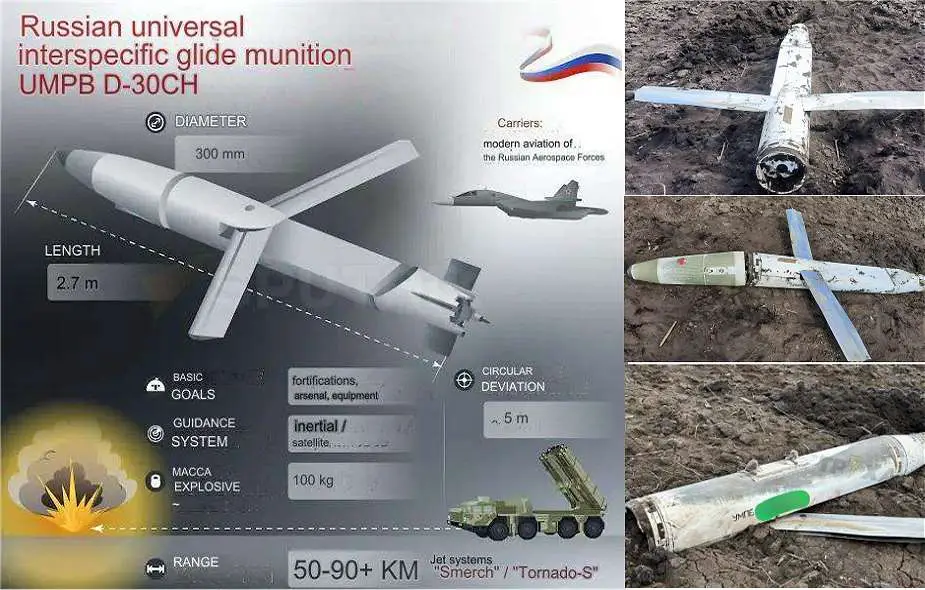Russian Air Forces launched an attack on the Ukrainian city of Kharkiv on March 26, 2024, employing the newly developed "UMPB D-30 SN" guided bombs for the first time. This advanced munition represents a significant leap in military technology, with a range that triples that of conventional glide bombs, akin to the American GBU-39/B SDB. Capable of reaching distances up to 90 kilometers, the use of the UMPB D-30 SN underscores a strategic advancement in aerial warfare capabilities, highlighting the ongoing intensification of military operations in the region.
Follow Army Recognition on Google News at this link

Russia Air Forces used new UMPB D-30 SN guided bombs to strike the Ukrainian city of Kharkiv. (Picture source Sputnik and Social Networks, editing ARG)
The UMPB D-30 SN, a pivotal addition to Russia's guided bomb arsenal, has been reported in use amidst the ongoing conflict in Ukraine. This guided bomb is a product of Russia's latest military advancements, aimed at enhancing precision and lethality in its operations. It marks a sophisticated evolution in the realm of munitions, demonstrating an increased focus on extending the reach and accuracy of aerial attacks.
Central to the design of the UMPB D-30 SN is its design based on the modified FAB-250 free-falling bomb, illustrating a strategic enhancement of existing ordnance with advanced guidance systems. Characterized as a glide bomb, the UMPB D-30 SN is engineered to be released from the aircraft, thereafter gliding towards its target to achieve extended range capabilities beyond traditional free-fall bombs. This design incorporates deployable wings, an additional rocket motor, and a guidance unit linked with the GLONASS satellite navigation system, showcasing a significant technological upgrade aimed at increasing strike effectiveness.
Historically, the FAB-250 forms part of the broader FAB series of general-purpose bombs (GPB) utilized by Soviet and subsequent Russian military forces. These bombs are designed for a wide array of tactical bombing missions, targeting enemy fortifications, infrastructure, equipment, and personnel. The FAB-250, weighing roughly 250 kilograms (approximately 550 pounds), is a staple in this series, recognized for its versatility and widespread application in various global conflicts, delivered from an assortment of aircraft platforms. Unlike their guided successors, the FAB series bombs are unguided, relying solely on the release conditions for trajectory and accuracy.
Adding to its versatility, the UMPB D-30 SN can be deployed not only from aircraft but also from ground-based platforms such as the Tornado-S and BM-30 Smerch Multiple Launch Rocket Systems (MLRSs), further extending its utility on the battlefield. This 300mm diameter bomb, equipped with a 100 kg explosive warhead and measuring 2.7 meters in length, offers a firing range of 50 to 90 km, presenting a formidable challenge to adversaries.
The United States and its allies have already fortified Ukraine's defensive capabilities by delivering 8 Patriot Air Defense Missile Systems. These state-of-the-art systems are strategically deployed to shield major Ukrainian cities, particularly those near the front lines, from the severe repercussions of extensive Russian aerial assaults employing such glide bombs. Notably, these Patriot systems possess the specialized capability to intercept and destroy Russian aircraft tasked with carrying these potent bombs, effectively neutralizing them before they can release their payloads such as the new UMPB D-30 SN guided bombs.
News Russia Ukraine War















